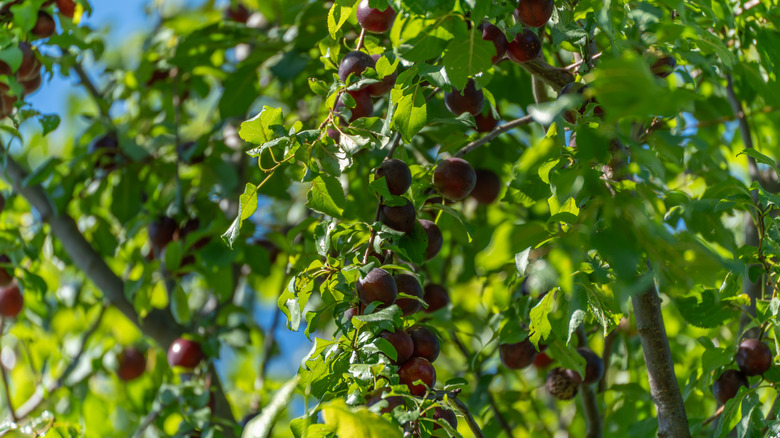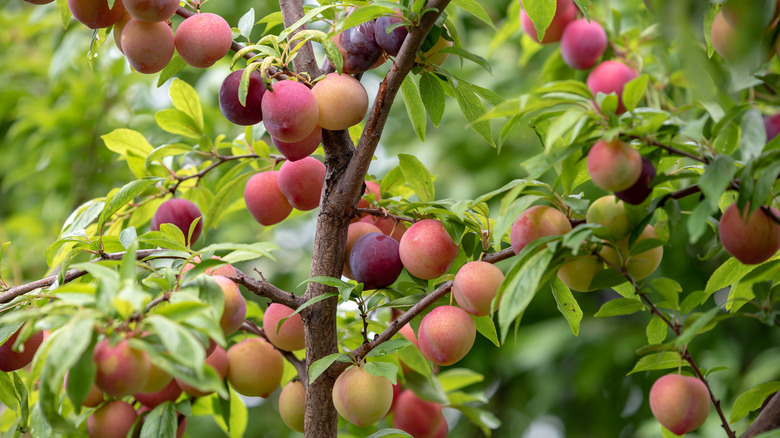Why Growing A Plum Tree From Its Pit Is Not Ideal, And What To Do Instead
It might be tempting to bury the pit of the juicy plum you just finished eating in a nice sunny spot in your yard to see what happens. Sadly, this might not deliver an endless bounty of similar plums, even if a tree does grow. Plums, like most stone fruits, are generally not propagated from seed and are instead grafted onto other rootstock. So, even if you're a whizz at identifying plum trees, there's really no knowing what characteristics the tree you sprouted might have. Moreover, it can take as long as five years for a tree grown from seed to bear fruit, so you might end up waiting all that time for an undesirable result. On top of all that, only some plum trees are self-fertile, so you probably won't know whether or not your plum tree will require cross-pollination with other plum trees in order to set fruit (or whether the pit you planted will be viable at all!).
A more reliable way to enjoy plums from your own tree is to source a young, grafted tree from a reputable nursery. This will allow you to select a variety suited to your local growing conditions. Additionally, if the variety you select requires a partner to cross-pollinate, you can get advice on which other varieties are compatible. If you're an advanced gardener who's up for a challenge, you might try to propagate plum trees by using techniques such as grafting or budding — although these tend to have a low success rate for the inexperienced.
Selecting and planting your plum tree
In general, European plums (Prunus domestica) and Japanese plums (P. salicina and hybrids) are great for backyard plum cultivation. There are several European varieties that are self-fertile as well, so that might be a good route if you don't want to plant more than one plum tree. Keep in mind, however, that even self-fertile trees benefit from being planted near other plum trees. European plums are typically hardy in USDA Zones 4 through 9, while Japanese plums prefer zones 5 through 8. There are also American native plums (P. americana), which, although they tend to be harder to find for sale and produce smaller fruit, can be suited to colder climates, such as those found in zone 3. They do, however, need to cross-pollinate.
When selecting the site for your new plum tree or trees, look for a location that receives full sun and has well-draining, preferably loamy soil. You'll also want to look for a site that is a little bit sheltered from the wind and not in a low area, since these early-flowering trees can be vulnerable to accumulated frost. It's best to transplant plum trees in spring after the thaw. One important caveat when planting grafted trees: Make sure you keep the graft union a couple of inches above the soil so the grafted part doesn't start growing its own roots in spite of the rootstock. Above all, be patient, as even grafted trees will likely take a few years to produce fruit.

